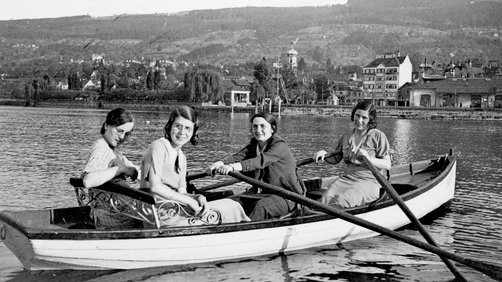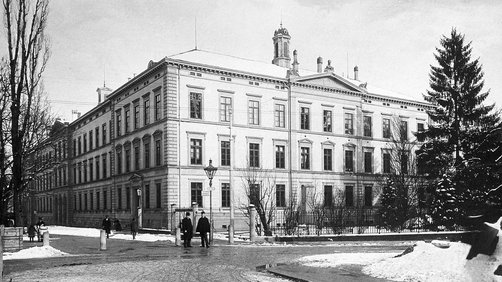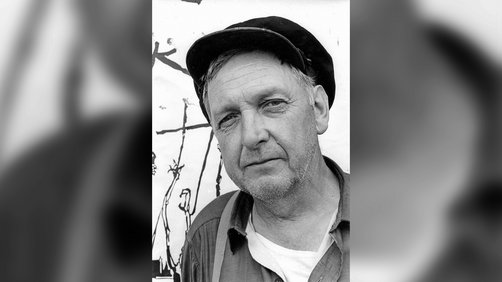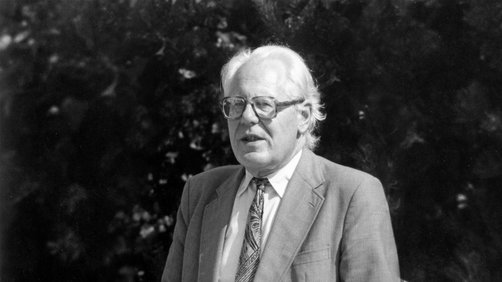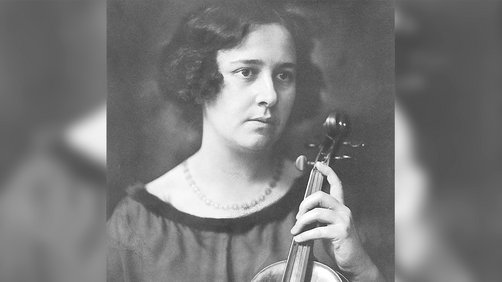Background - 08.08.2019 - 00:00
History lesson: Walter Förderer, the architect of Rosenberg Hill
Walter M. Förderer is the architect who realized his vision of the University of St.Gallen in the early 1960s. The “La Tête” project was an architectural, operational and economical tour de force.

Born in Nohn in the Canton of Zurich in 1928, Walter Maria Förderer spent his childhood and youth in Basel and Schaffenhausen. After attending grammar school, he apprenticed himself to a typographer, attended a daytime sculptor’s school at the Basel School of Design and worked as a sculptor and assistant draughtsman at Willi Gossweiler’s architectural firm (Schaffhausen) before completing an architectural training program with Basel-based architect Hermann Baur.
Brutalism as an artistic synthesis
He opened his own architectural firm with Rolf G. Otto in Basel in 1956 and was later joined by Rolf Otto and Hans Zwimpfer from 1958 to 1964. In the beginning, the firm mainly focused on competitions. In 1957, it beat out 116 competitors with a design for the new building at the HSG. The "La Tête" project, which clearly bore Förderer’s artistic mark, was an architectural, operational and economical tour de force. Förderer viewed the brutalist structures as artistic syntheses of abstract contemporary art where he dictated everything down to the very last detail (including the shapes of the ashtrays). The university buildings represented Förderer’s first internationally acclaimed work.
Building, teaching and return to sculpture
After dissolving the architectural firm (1964), Förderer built several school buildings but focused mainly on Protestant and Catholic churches in Germany (particularly Monheim and Lübeck) and Switzerland (including Bern, Chur, Hérémence, Lichtensteig, Schaffhausen). In 1965, he accepted a position as a professor for "coordinating artistic design" at the Academy of Fine Arts in Karlsruhe and served as an adjunct professor at various universities in and outside Germany (Switzerland, Norway, Belgium, Austria and Turkey). In 1986, he was made an honorary professor of design at the University of Stuttgart.
In the early 1970s, Förderer left architecture to devote himself to sculpture again. This also marked the beginning of his political career (member of the cantonal parliament in Schaffhausen 1973-1979, candidate for the Council of States). In 1979, he began to create many stereographs populated with figures ("Raumbildkästen" – stereograph boxes).
Continued ties to HSG
Förderer maintained close ties with the HSG even after completing the university buildings on Rosenberg Hill: In 1968/69, for example, he and Hans Zwimpfer created a design for the planned expansion of the HSG but saw it rejected in a 1970 referendum. In the 1980s, he sat on the jury for the Library Building that architect Bruno Gerosa built in 1986-1989. Förderer even tweaked the design here and there (e.g. in the entrance). He also served on the Art Committee for the Library Building.
The first work of art in the course of the Library Building project came from Förderer himself: After he had set up a provisional wooden model of a new stereograph in the breezeway between the Main Building and the Library Building in February 1987, a decision was made to build a final version of the model, which was titled "Inaccessible spaces". It was formally dedicated on 10 June 1988 ahead of the "dies academicus".
Förderer also taught at the HSG: For example, he participated in the "Residing and Living" lecture series in the 1973/74 winter semester and gave public lectures on architecture and art starting in the 1987/88 winter semester. On 24 January 1985, he gave an assembly hall lecture entitled "Being creative" as several of his works were being exhibited in the main building.
Walter Förderer died after an extended battle with a serious illness in 2006.
History portal of the University of St.Gallen
More articles from the same category
This could also be of interest to you
Discover our special topics



![[Translate to English:] Choix Goncourt de la Suisse | unisg.ch](https://www.unisg.ch/fileadmin/_processed_/b/a/csm_Choix_Concourt_de_la_Suisse_HT-Stibi-069_2110740678.jpg)

